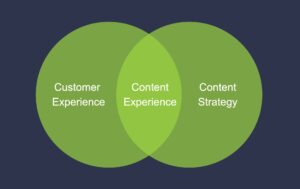Lead generation content has always played a starring role in B2B marketing. Here’s the classic playbook: Offer a high-value e-book or other content asset and gate it behind a form. Then collect a boat-load of leads that you either nurture via email—with more content—or pass off to sales.
Unfortunately, that playbook doesn’t work nearly as well as it used to. Today, creating content that generates leads is one of the top five challenges marketers face, according to Hubspot’s 2024 State of Marketing Report.
In the digital-first era, if you want to build trust and create a relationship with prospects—and turn them into lifelong customers—then you need to modernize lead generation and rethink your approach to lead generation content. You need to focus on creating a better content experience. That means looking holistically at how audiences interact with all your content (not just one asset). It also involves understanding how your content works together to engage your audience and meet their needs.
Let’s dig into some of the problems with typical lead generation and content marketing practices, and how a focus on content experience (a discipline closely related to user experience) can help solve them.
3 Reasons Your Lead Generation Content Doesn’t Work
1. You’re Moving Too Fast.
The perennial gripe from B2B sales teams is that the leads passed over from marketing go nowhere. Even if they fit your ICP and MQL definitions to a tee, these individuals are simply not ready to buy. And why would you think they are, when they just downloaded a single content asset or viewed a web page? They haven’t shown buying intent. And yet in this scenario, their next content touch is often a hard sell, badgering them to set up a sales meeting. Instead of building a relationship (slowly), you’re irritating them and turning them off.
2. You’re Only Thinking Transactionally.
Old-school content marketing tends to look at content transactionally: Your prospect gives up their name and email address in exchange for a piece of valuable content. A human being is reduced to a “lead,” and your subsequent content touches focus only on marketing and selling to that lead.
With this mindset, you fail to realize that B2B content isn’t designed to make a quick sale; its best purpose is to educate and help people as they move along a journey. In the process of genuinely helping, people get to know and trust your company. When they’re looking to buy a solution, they’ll think of you first—and reach out on their own. But this process takes time.
3. You’re Not Personalized Enough.
Do you understand your individual customers’ goals and pain points, or at least their needs at the company/account level? Customers expect a personalized and relevant experience, not one-size-fits-all messages pushed out via spray-and-pray email campaigns. The content you serve them should focus on their expressed interests and needs, not your own marketing agenda or company narrative. Each touchpoint should build on the previous one.
Modernize Lead Gen Through the Lens of Content Experience
A better way to approach lead generation and lead nurturing—as well as demand generation—is by considering the content experience you’re delivering, and how to optimize it. The goal of a well-designed content experience is to deliver the right information to the right person, in the right way, at the right time and place.

To achieve this goal, familiarize yourself with Tendo’s seven principles of a great content experience. The lead generation content you create should, together, deliver an experience that reflects some or all of these seven characteristics:
- Progressive: Your content builds on the last touchpoint, rather than repeating it or existing in isolation. You recognize a user’s interests and progressively add more information to the conversation.
- Connected: Each touchpoint should relate to the previous one and maintain consistency. Your landing pages, social posts, emails, and banner ads, should all feel connected to one another, message- and design-wise.
- Contextual: How your customers experience lead generation content depends on the context in which they consume it. Are they on a mobile device? In the United States or overseas? At the awareness or decision stage of the customer journey? Contextual elements like these can influence what information you share and via what channel.
- Engaging: Does your content stand apart from the digital noise? Does it capture your audience’s attention—visually and editorially—or elicit a shrug? An engaging content experience is paramount for successful lead generation, with fresh, immersive, and creative content.
- Relevant: Personalized content is now table stakes to build engagement trust. Dynamically tailor your content based on factors like an individual’s industry, role, behavior, or expressed interests. Use personalization to put customer needs first at every touchpoint.
- Guided: To nurture prospects and build a relationship, guide them to the next step in their journey. Recommend the next relevant piece of content to consume.
- Structured: This is a geekier topic than the other ones on this list, but properly structuring your content in your CMS can help you deliver content to your audience’s preferred channel: blog, social, Google listing. You can meet your audience where they are.
Should Lead Gen Even Be a Thing Anymore?
More B2B marketing thought leaders like Chris Walker argue that traditional lead generation is an outdated practice, which simply doesn’t work anymore. Demand generation, not lead generation, is the more evolved approach, he says. Focus on creating awareness and demand for your solution over time. Use content to educate and build trust with your audience. They’ll contact you when they’re ready.
We’re not going to wade into that debate for now. Our point is simple: Deliver a better, more relevant content experience to your audience. By doing so, you’ll have greater success with nurturing leads, strengthening relationships, and building trust.
Let Tendo Craft your Content Experience
With expertise in content marketing, demand generation, and user experience, our team is perfectly positioned to deliver an outstanding content experience for your customers. Get in touch to modernize lead generation and create a content experience that speaks to your audience.
First published June 19, 2022










